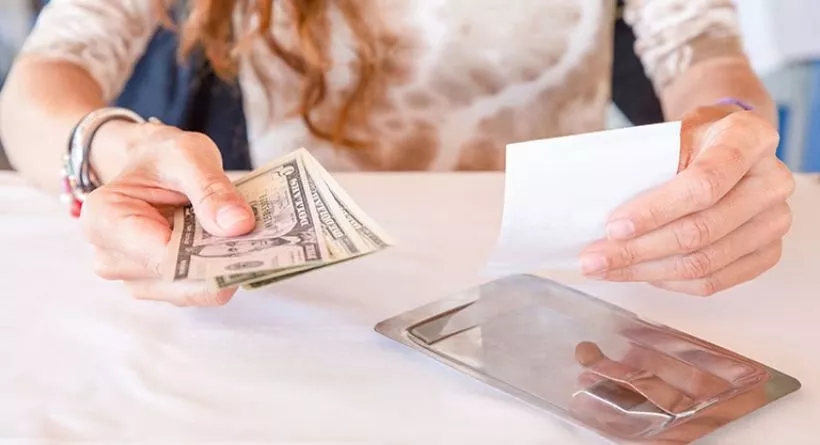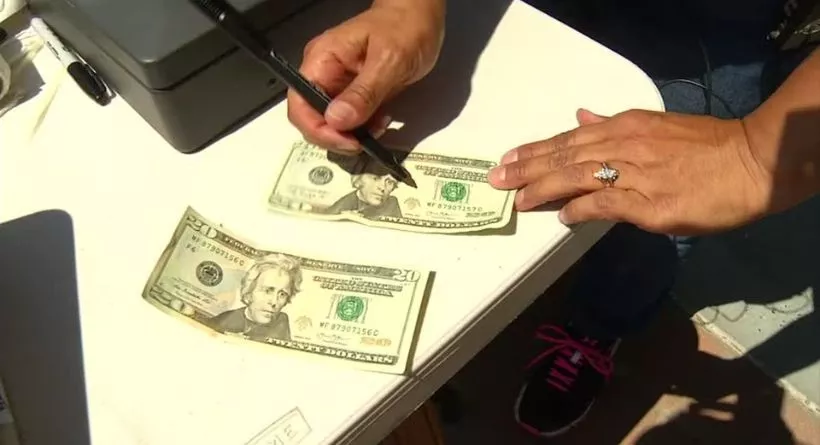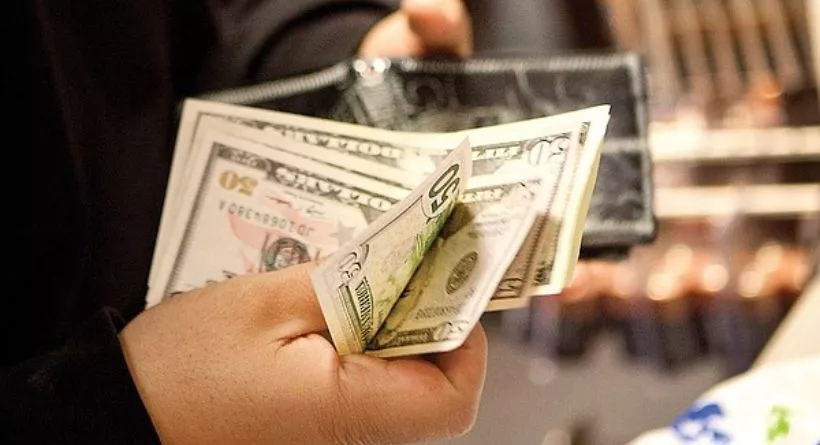Have you ever been in a situation where you suspect the cash you just received might not be genuine? Detecting counterfeit money can be a challenging task, but it’s crucial to protect yourself and your business from financial losses. In this blog post, we’ll tackle the issue of counterfeit money and help you become an expert at identifying fake bills. We promise to provide you with 8 effective ways to detect counterfeit money that will empower you to confidently handle cash transactions.
By the end of this article, you’ll not only be able to recognize the signs of counterfeit bills, but also understand the importance of staying vigilant in this ever-evolving world of currency fraud. So, let’s dive into this comprehensive guide on how to detect counterfeit money and safeguard your hard-earned income from potential scams.
The Importance of Detecting Counterfeit Money
Financial losses for individuals and businesses
Detecting counterfeit money is crucial for everyone, from individuals to businesses. Falling victim to fake bills can lead to significant financial losses. Imagine the frustration and disappointment you would feel after discovering that the money you earned, saved, or invested turned out to be counterfeit. Businesses, especially those dealing with cash transactions regularly, need to be particularly vigilant, as accepting fake bills can quickly add up to substantial losses.
Also Read: THE TOP SIX RETAIL STORE DESIGN LAYOUTS 2022
Legal consequences
It’s not just the financial aspect that makes detecting counterfeit money essential. Possessing, using, or distributing fake bills knowingly or unknowingly is illegal and can result in severe legal consequences. Penalties may include hefty fines, the confiscation of genuine money, or even imprisonment. By learning to detect counterfeit money, you’ll protect yourself from unintentionally breaking the law.
Impact on the economy
Counterfeit money doesn’t only affect individuals and businesses – it has far-reaching consequences on the economy as a whole. The circulation of fake bills undermines the integrity of a country’s currency and can lead to inflation, causing prices to increase and the value of genuine money to decrease. Thus, detecting counterfeit money is vital for maintaining a stable and healthy economy.
8 Ways to Detect Counterfeit Money

Look for security features
Watermarks
One of the most effective ways to detect counterfeit money is to examine the bill for watermarks. Genuine banknotes often have a hidden image visible when held up to the light. These watermarks are difficult to replicate and can help you confirm the authenticity of the bill.
Security threads
Another security feature to look for is a security thread embedded in the paper of the banknote. This thread typically runs vertically through the bill and has inscriptions, such as the denomination, which can be seen when held up to the light.
Color-shifting ink
Many currencies use color-shifting ink on specific parts of the bill. When viewed from different angles, the color of the ink will appear to change. This feature is hard to duplicate, making it a reliable way to detect counterfeit money.
Feel the texture of the bill
Genuine banknotes have a distinct texture due to the unique paper and printing techniques used. Counterfeit bills often feel smoother or more slippery than genuine ones. By familiarizing yourself with the texture of real money, you’ll be better equipped to identify fake bills.
Also Read: How Much Does A Billboard Cost?
Examine the printing quality
Inspect the quality of the printing on the bill. Genuine banknotes have intricate and detailed designs that are difficult to replicate with precision. Counterfeit bills may have blurry lines, inconsistent colors, or smudged ink.
Compare the bill with a genuine one
If you’re unsure about the authenticity of a banknote, compare it to a bill you know is genuine. Look for differences in color, size, texture, and overall quality. This side-by-side comparison can be invaluable in helping you detect counterfeit money.
Use UV light to detect counterfeit money
Many banknotes have security features that are only visible under ultraviolet (UV) light. By shining a UV light on the bill, you can reveal hidden elements, such as fluorescent ink or micro printing that indicate its authenticity.
Implement counterfeit detection devices
Businesses can invest in counterfeit detection devices, such as currency counters with built-in fraud detection or dedicated counterfeit bill detectors. These devices can quickly and accurately identify fake bills, providing an extra layer of protection.
Train employees to spot fake bills
Educating your employees on how to detect counterfeit money is essential for businesses dealing with cash transactions. Regular training sessions and providing access to resources can help them become proficient at identifying fake bills, minimizing the risk of accepting counterfeit money.
Verify the serial numbers
Lastly, check the serial numbers on the bill. Each banknote has a unique serial number, and counterfeiters may
Tips for Handling Counterfeit Money

What to do when you receive a fake bill
If you suspect you’ve received a counterfeit bill, it’s essential to act cautiously. Avoid confronting the person who gave you the bill directly, as they might not be aware it’s fake. Instead, politely inform them of your concerns and request another form of payment. Afterward, store the counterfeit bill in a safe place and contact your local authorities or the nearest U.S. Secret Service office to report the incident.
How to report counterfeit money
When reporting counterfeit money, provide as much information as possible, including where and when you received the bill and any details about the person who gave it to you. It’s crucial to cooperate with the authorities, as your assistance can help them track down counterfeiters and prevent further circulation of fake bills.
Best practices for preventing counterfeit money scams
Preventing counterfeit money scams begins with vigilance and awareness. By implementing the methods mentioned above to detect counterfeit money, you can significantly reduce your risk of becoming a victim. Additionally, encourage employees to stay alert and provide regular training on identifying fake bills. Using counterfeit detection devices and maintaining a clear protocol for handling suspected counterfeit money can further protect your business and personal finances.
Conclusion
In conclusion, detecting counterfeit money is crucial for preventing financial losses, avoiding legal consequences, and ensuring the stability of the economy. By familiarizing yourself with the security features on genuine currency, such as watermarks, security threads, and color-shifting ink, you can effectively identify fake bills. Additionally, pay close attention to the texture, printing quality, and serial numbers on the currency. Employing UV lights and counterfeit detection devices, as well as training employees to recognize fake bills, will further strengthen your defense against counterfeit money. Remember to follow the best practices for handling and reporting counterfeit currency to ensure you’re doing your part to combat this issue. Stay vigilant and proactive in protecting your finances and supporting a healthy economy.
Also Read: 8 Data-Driven Steps to Re-Design Your Store
FAQs
Q: How can I tell if a bill is counterfeit?
A: Look for security features such as watermarks, security threads, and color-shifting ink. Additionally, examine the texture, printing quality, and serial numbers on the bill. Comparing the suspicious bill to a genuine one can also be helpful.
Q: What should I do if I suspect a bill is counterfeit?
A: If you receive a counterfeit bill, avoid confronting the person who gave it to you. Instead, handle the bill as little as possible, place it in a protective cover, and contact local law enforcement or the nearest U.S. Secret Service field office.
Q: Can I use UV light to detect counterfeit money?
A: Yes, UV light is a useful tool for detecting counterfeit money. Many genuine bills have security features that react to UV light, such as glowing in a specific color, which can help you distinguish real currency from counterfeit bills.
Q: Are there devices available to detect counterfeit money?
A: Yes, there are a variety of counterfeit detection devices on the market, including UV lights, magnetic ink detectors, and infrared scanners. These tools can help businesses and individuals quickly and accurately identify fake bills.
Q: How can I train my employees to recognize counterfeit money?
A: Provide your employees with training on the various security features of genuine currency, as well as tips for identifying counterfeit bills. Encourage them to examine the texture, printing quality, and serial numbers of bills, and to use available detection tools when necessary. Regularly update your employees on new counterfeiting trends and techniques to ensure they remain vigilant and well-informed.

